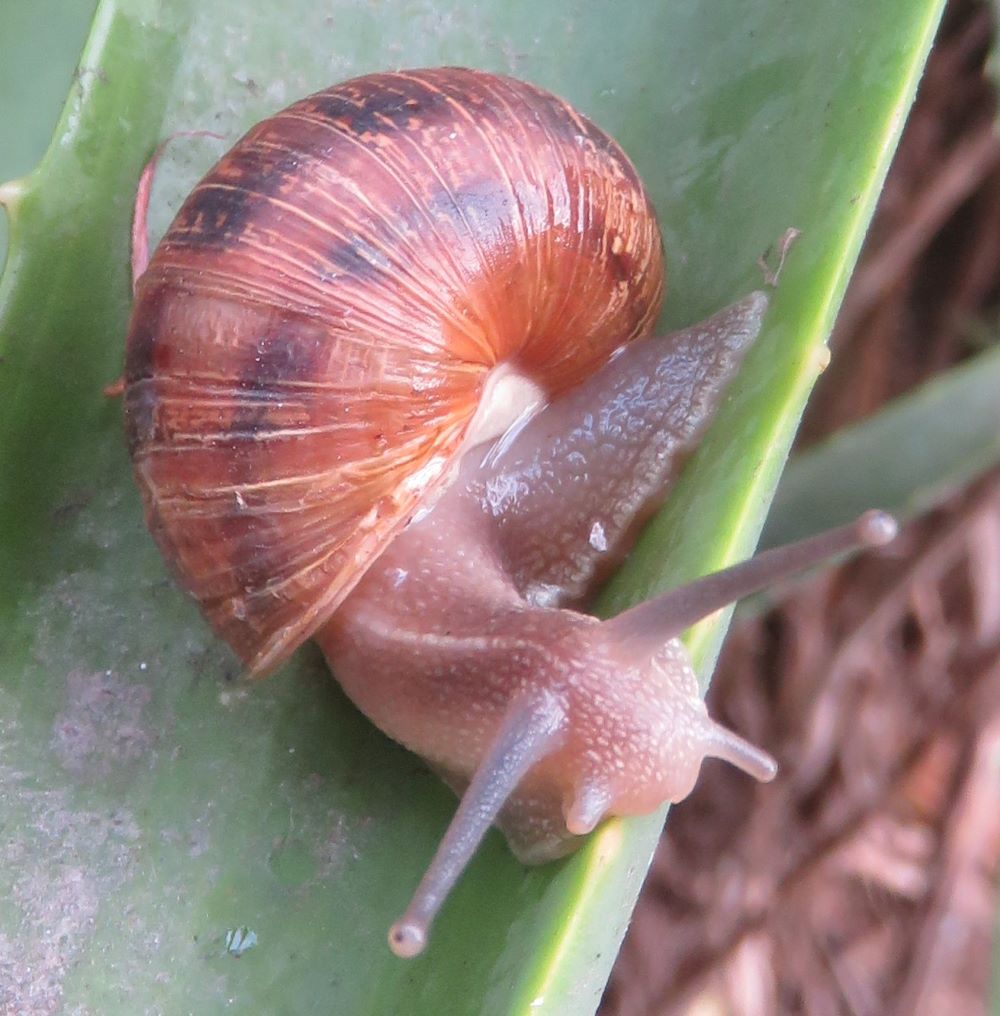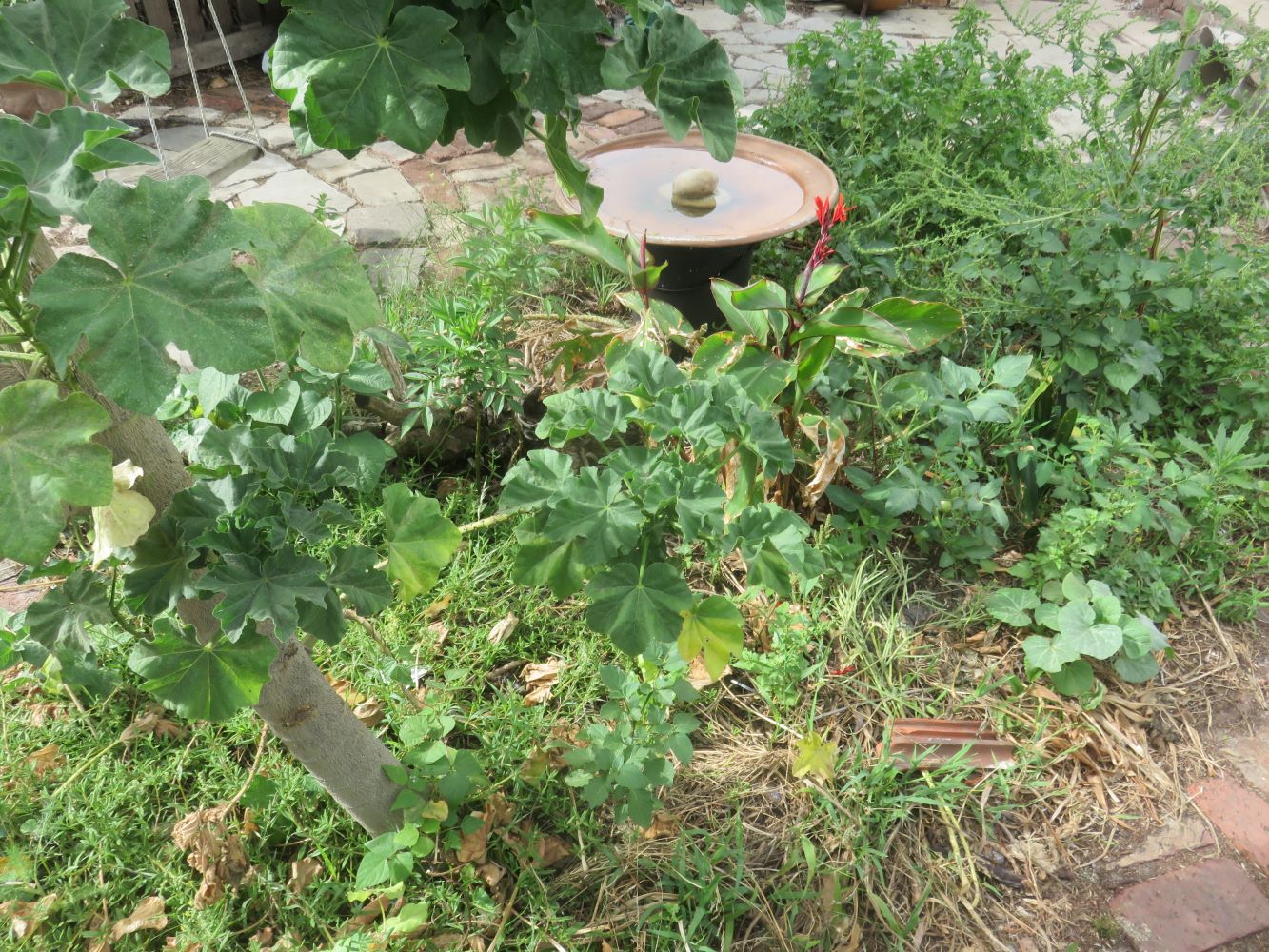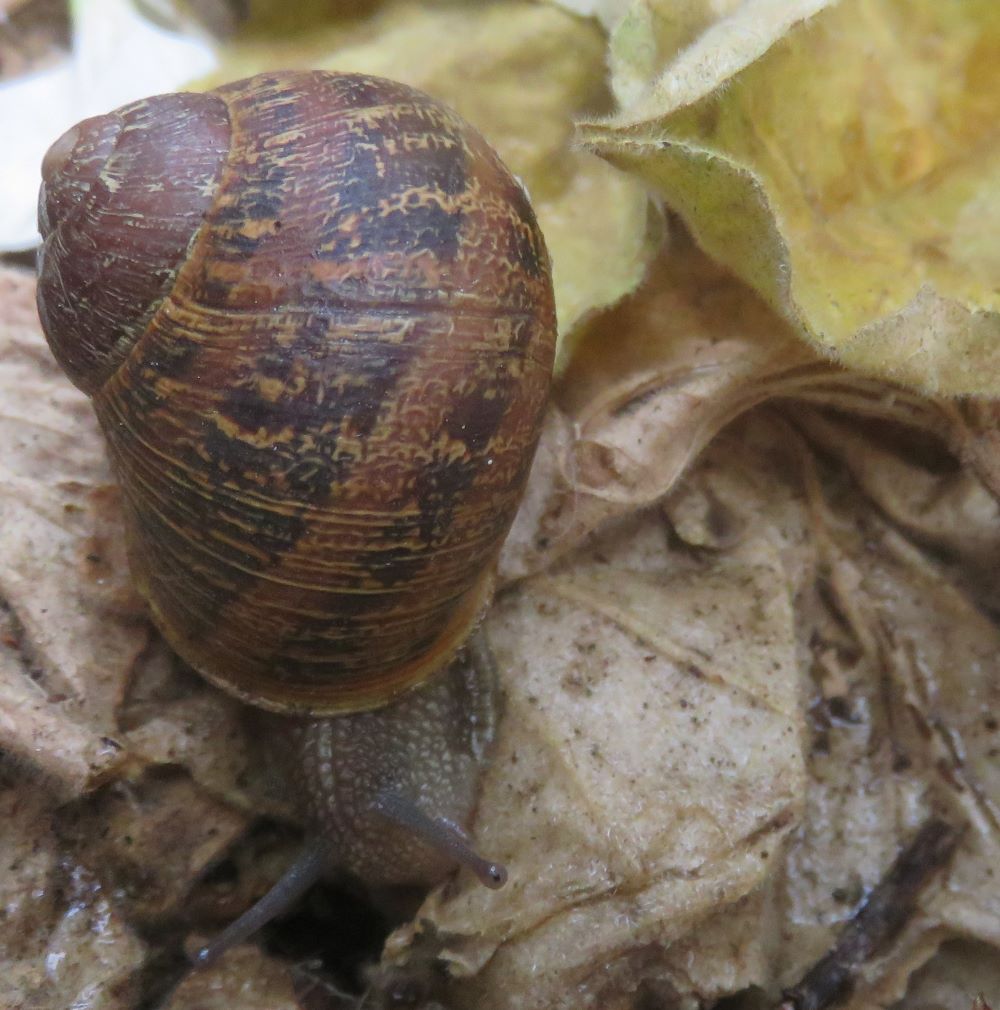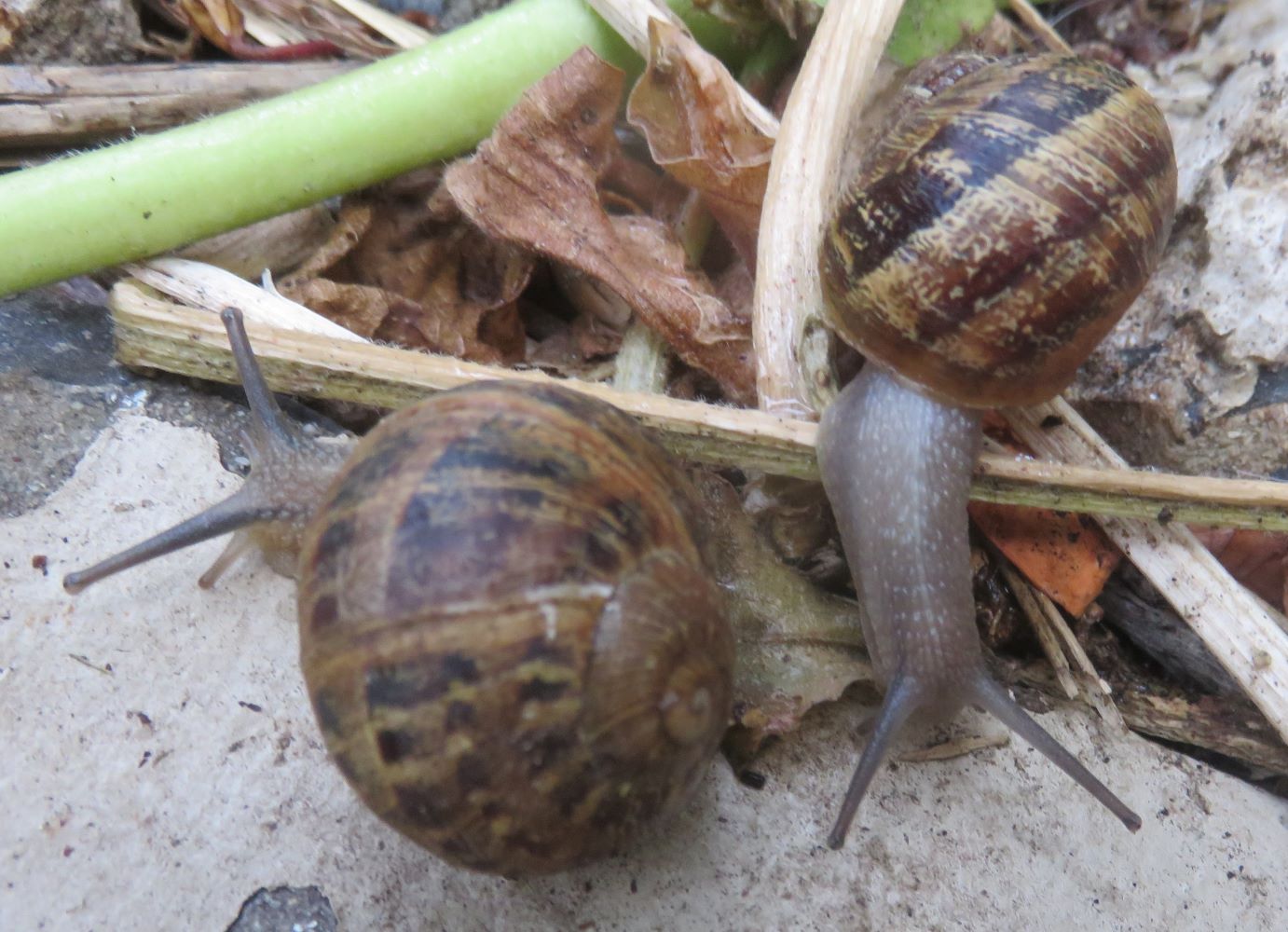Dear Reader, in this age of AI created content, please support with your goodwill someone who works harder to provide the human-made. Sign up in the righthand column or bottom of this page. You will receive my hand illustrated monthly newsletter RESTORE NATURE and access to the biodiversity garden design course as I write...and nothing else, I respect your time.
What to do about snails !
 Snails are everywhere in my garden.
Snails are everywhere in my garden.Should we stomp on snails ?
Most articles online about snails are negative and focus 100% on how to 'get rid' of them. This is because depending where you live, and what you want to grow in your garden, snails or slugs can be a huge problem, eating seedlings, vegetables or flowers so that the gardener is not able to enjoy them. The snail herbivory in my garden, my snail 'problem', was so massive that after a few years I found the question of how to eliminate them counter productive if not useless, and I began to surrender and ask new questions.
I asked myself if I was not engaging in 'wrong thinking' about the hard-necked persistence of the 'snail problem' in my garden. Wrong thinking can happen easily, for example in the way we hate 'pests' and include all insects which dare to fly over our garden walls, before we see the sense in organic gardening. Only later do we no longer 'get rid of ' small life forms, but 'get rid' of the array of poisons and remedies that are supposed to dispose of life. Only after growing our knowledge on ecology and diet, for example, can there be a shift in perspective on 'pests' and 'weeds' such that we see our previous thinking was misguided. Once graduating out of this biocidal thinking, organic or not, one often deeply regrets the damage one has done, but the joy in the new life affirming way of doing things makes up for that.
 A nuisance or a blessing ? A bed of self seeded 'weeds'. No maintenance, plentiful food !
A nuisance or a blessing ? A bed of self seeded 'weeds'. No maintenance, plentiful food !A wildlife garden can change one's perspective on nuisances in the garden.
When one starts to establish a 'wild life' garden, the first thing one generally wants to know about is what to plant and do in order to guide the process, to attract the wildlife you want. The next is how to step back from guiding and allow space for the things that invited themselves. How do we accommodate them and integrate them into our plans since we have no choice, not without exerting a genocidal level of control ?
In terms of the space they take, first on the list of apparent nuisances come the uninvited plants. Then come the snails which are large and consume an enormous amount of your chosen 'invited' plants. Large in impact but microscopic in individual size are the next on the list, various pathogenic fungi and bacteria, and only after them come the various leggy things, insects, spiders, geckos and the like, which in my garden don't take much. Learning how to live with all these levels of uninvited life in the garden, the 'weeds' and 'pests' has been a long four year journey of reading, observation and surrender.
Identifying the weeds and then Googling them has taught me that about 95% of the uninvited vegetation by mass is edible, most of the rest, like grasses, are photosynthetic powerhouses and good for the soil, and all of them are compost-able, brew-able or usable as mulch. I've got to the point of saving the weeds that come up in my seed trays as if they were precious food plants, which they usually are. The wild plants are often more nutritious than vegetables, for reasons I've reiterated so often, such as breeding and selection. I won't bore you with that now. The insects one learns about one by one, but whether aphid, sap sucker, pollinator or hunting beetle, they are all food for wild bird chicks in the nest. The microbes I must get around to, and read more on, it's the snails that will receive our attention in this and the next few articles.
 Snails eat dead and decomposing vegetative matter.
Snails eat dead and decomposing vegetative matter.Whither goes the snail trail ?
In this series of articles I attempt to answer some of the questions my softer more accepting attitude provoked such as why snails are so numerous, why they are there at all, being of what use or function in the ecosystem, and whether they benefit the gardener in any way. Only after pursuing these questions did I return to my first snail question before the learning journey, as to whether there are ways of keeping snails off my lettuce, methods that are neither toxic nor murderous, and ideally harness natural processes. Perhaps after pursuing these questions one finds that killing snails was misguided. We'll see how you feel at the end of the snail story.
We will delve into the snail biology, ecology and gastronomy, and perhaps discover some unexpected and interesting things about snail locomotion, diversity, archaeology and the ways in which they are beneficial. We may come to value them. I hope you will agree with me that the humble snail is like the stone that is overlooked and yet becomes the corner-stone of the temple. Surely it is the most overlooked creature that gives its own life to provide for so much other life in the sanctuary of the wildlife garden.
 For a snail, every meeting has so much potential ! Read the next article on snail biology and love making.
For a snail, every meeting has so much potential ! Read the next article on snail biology and love making.------
home page for lots of links to articles on natural gardens
------
------
Snail behavior, from mating to feeding
How snails benefit the garden soil
Restore Nature Newsletter
I've been writing for four years now and I would love to hear from you
Please let me know if you have any questions, comments or stories to share on gardening, permaculture, regenerative agriculture, food forests, natural gardening, do nothing gardening, observations about pests and diseases, foraging, dealing with and using weeds constructively, composting and going offgrid.
SEARCH
Order the Kindle E-book for the SPECIAL PRICE of only
Prices valid till 30.09.2023
Recent Articles
-
Geography Research Task
Jan 31, 25 11:37 PM
To whom it may concern My name is Tanyaradzwa Madziwa and I am a matric student at Springfield Convent School. As part of our geography syllabus for this -
Eco Long Drop Pit Latrines Uganda
Nov 29, 24 02:45 AM
Good evening from the UK. My name is Murray Kirkham and I am the chairman of the International and foundation committee of my local Lindum Lincoln Rotary -
Landscape Architect
Oct 01, 24 10:42 AM
I so appreciate your informative description! Your experimentation and curiosity with the seeds, germination, and rearing of the maggot are exciting to
"How to start a profitable worm business on a shoestring budget
Order a printed copy from "Amazon" at the SPECIAL PRICE of only
or a digital version from the "Kindle" store at the SPECIAL PRICE of only
Prices valid till 30.09.2023





